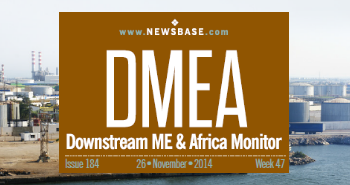Iran to ration fuelling at petrol stations amid price hike rumours
_Cropped.jpg)
Iran’s government is set to force all petrol sales to go through its fuel rationing system for those "only" with government-issued "refuelling cards," Oil Minister Javad Owji said on April 4.
Iran has had a fuel rationing system since 2007, under which the government allocates a monthly portion of subsidised petrol to each car. Still, despite previous attempts by the Rouhani administration in 2019 to increase the price of fuel it ultimately resulted in hundreds of deaths following riots – something the current Raisi administration is mindful of in any move to rationalise pricing.
Each car in Iran has a petrol ration of 60 litres per month, priced at IRR15,000 per litre (around $0.02). For more petrol, drivers must pay double the price of subsidised fuel while still using their fuel cards; however, this second fuel price appears to be closing.
Irrational pricing choking cities
The low fuel cost – cheaper than bottled water per litre – is a relic of the 1979 revolution, where Ruhollah Khomeini promised the “fruits of Iran” for the nation upon returning from exile. Since that date, the cost of production and the government-mandated sales price have massively diverged, causing significant overconsumption.
“One way to cut down on petrol consumption is to rely on personal fuel cards for cars, and after the next ten days, fuelling will only be limited to transactions made through these cards,” Owji told reporters after a cabinet meeting in the capital Tehran.
Owji’s announcement fuelled rumours that the government was set to hike rates. This highly sensitive issue sparked nationwide street protests the last time fuel prices were raised in November 2019, leading to the deaths of more than 200 protesters, according to the then interior minister.
However, fearing a repeat of 2019, Owji assured that the new restriction “had nothing to do with” increasing petrol prices. “We are trying non-price methods to curb petrol consumption,” he added.
According to the Ministry of Petroleum, a daily average of 120.8mn litres of petrol was used during the two-week Persian New Year holiday, known as Nowruz, starting on March 20.
The amount was around 7mn litres or 6% higher compared to the same period a year earlier.
Before the two-week holiday period, Iranians' fuel consumption averaged around 115mn litres per day, but like in previous years, consumption and low prices below the point of production have seen overconsumption creep up again.
The minister called on drivers to take the issue of using personal fuel cards “seriously”.
“As per this year’s budget bill, 95% of fuelling must be done through fuel cards,” he stressed.
Despite Owji’s warning, the director of the National Iranian Oil Products Distribution Co. (NIOPDC), said the extra fuel cards would be available at filling stations for those motorists who do not have their own cards with them for any reason.
“A limited number of emergency fuel cards are available at petrol stations to be used by people who have not yet received their fuel cards and have other problems,” Ja’afar Salarinasab told state TV.
The high rate of fuel consumption mainly stems from gas-guzzling cars, which burn up to three times more than global standards. Most cars made by local companies in Iran are fuel-inefficient, as they use outdated technologies dating back to Euro-3 standards.
Smuggling on the rise
Also, another reason is fuel smuggling. Dirt-cheap fuel prices have created a booming black market for smugglers, who systematically transport petrol and diesel to neighbouring countries such as Pakistan, Turkey, Armenia and Afghanistan, where these commodities are sold up to 20 times higher than in Iran.
The economic consequences of the illicit trade are far-reaching, as the daily loss of just 20 litres of petrol and diesel costs the country $5bn annually, according to local estimates.
A fuel price hike in Iran seems inevitable. However, when fuel prices soar, they send shockwaves throughout society, pushing up all consumer prices and thus living expenses.
Fears of foreign interference
Iran’s clerical government is quietly nervous that, considering the ongoing targeting of its assets in Syria and beyond, enemies of the regime would use public discontent over fuel prices against it like in 2019, a claim Khamenei and others made in the previous round of protests.
Khamenei in an April 3 speech to the top military in the country said his main target was Israel, even later tweeting in Hebrew on social media platform X: “With God's help we will make the Zionists repent of their crime of aggression against the Iranian consulate in Damascus.”
The Iranian leader’s comments come amid a growing cold war quickly turning hot between the two strongest militaries in the region, one with the support of the US while Iran is backed by Russia.
In 2019, former interior minister Abdolreza Rahmani Fazli also tried to relay just how big a conspiracy the authorities had foiled, adding in remarks to IRNA that more than 50 bases used by security forces were attacked and approximately 70 petrol stations were set on fire by elements of those who took part in the unrest, which he said involved around 200,000 people in a country of 81mn.
Further pushing the official line that the unrest was the result of a foreign plot, IRNA reported that at least eight people allegedly linked to the CIA were arrested during the upheaval.
"These elements received CIA-funded training in various countries under the cover of becoming citizen-journalists," the Intelligence Ministry was quoted as saying.


Follow us online